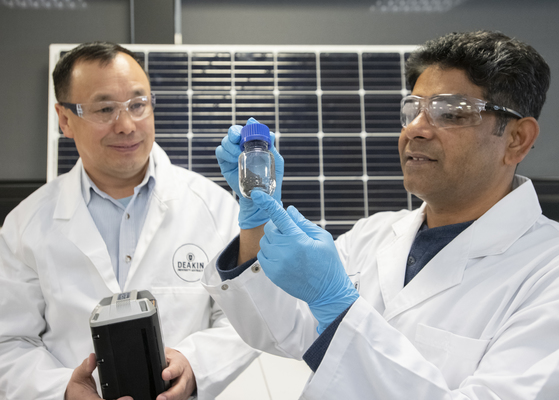
Two Waurn Ponds researchers have solved the “biggest problem” preventing the recycling of solar panel cells, according to Deakin University.
Material scientists Mokhlesur Rahman and Ying Chen found a way to use silicon from discarded solar panels in batteries, Deakin announced on Monday.
“It’s the holy-grail of repurposing,” said Dr Rahman, who works at Deakin’s Institute for Frontier Materials at Waurn Ponds.
“To take a product that would otherwise be waste, recycle it, and in the process make it even more valuable at the other end.”
According to the researchers, the average service life of a solar panel is between 15 and 25 years.
Solar panels consist mostly of glass, metal and plastic, plus a small amount of silicon.
But without a silicon-recycling process about 1.5 million tonnes of solar panel waste will go to landfill by 2050, according to modelling.
“Although silicon semiconductors make up a relatively small part of solar panel cells, the material’s value is extremely high,” Dr Rahman said.
“Scientists have been looking for ways to repurpose the silicon for some time and we believe this to be the missing piece of the puzzle.”
The pair had developed a method of using recycled silicon from solar panels to replace commercial nano-silicon in high-energy battery anodes, Dr Rahman explained.
“Surprisingly, the recovered silicon seems to work the same way as commercial silicon does,” he said.
“Our discovery addresses several significant challenges currently facing industries dependent on batteries and energy storage heading into the future.”
Dr Rahman said many car and battery manufacturers were stockpiling battery-grade nano-silicon, which costs about $44,000 per kg.
“Being such an exceptionally high-value commodity with widespread applications we do not want any of this precious product wasted.”
Disassembling photovoltaic panels and repurposing the silicon had “huge potential” as a cheaper alternative source for the sector, Professor Chen explained.
“Silicon cells are the most important component of a solar panel, transferring the sun’s energy into electrons,” he said.
“They’re also a high-value material being a chemical element and far too precious to end up as waste, which is why this finding is significant.”






